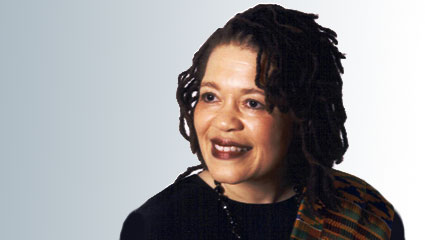Something about unpacking unearths forgotten memories.
A few weeks ago, in my unpacking, I ran across an old calendar containing pictures from Crowns: Portraits of Black Women in Church Hats, a recent photo essay book and off-Broadway play, by Michael Cunningham and Craig Marberry (2000). Cunningham and Marberry did not just show us pictures of women in interesting hats, they told the unknown stories of several women and their hats.
Infrequent hat wearers like me often think that wearing a hat to church is simply adding a hat to what you had planned to wear that day. But my octogenarian relatives confirm Cunningham and Marberry’s thesis: that in the black church community (and, I suspect this is true of other places as well) hats have functioned as a peephole into the life of the wearer. When I ask the old women in my life about their hats, most of their hat stories are more about people, life and journey than about matching an outfit.
What’s Under Your Hat?
Sermons heard over time also function like a peephole, revealing something about the inner life of the preacher. I agree with Fred Craddock that preaching is a form of self-disclosure, whether we intend for it to be so or not. And sometimes, sermons become so revealing that the preacher, like the proverbial Emperor, becomes at least partially disrobed in the presence of his or her congregation. Even when we think we have skillfully avoided the Romulan Neutral Zone of self-disclosure, our sermons inevitably reveal something about us in areas like personal theology, political or social leanings, family-of-origin issues, or dreaded insecurities.
Of late, I am convinced that preaching reveals deeper elements of self that had not been on my radar screen — like the personae that provide motivation for ministry. What hat are you wearing? Who are you when you stand in the pulpit? Theologian-in Residence? How do you function in your faith community? Do you assume the role of Average Joe or Josephine simply bearing witness to the faith that has been handed to us? When you step up to the sacred desk, are you aware of how the congregation regards you? Are you the trusted sage, or the venerated holy person, or a prophet to be feared? Aware or not, when you or I stand in the pulpit, one of these personae or another often steers my tongue, words my allusions, and skews sermonic outcomes.
As with all typologies that relate to things spiritual, every conceivable preaching persona has a potential downside. For example, the downside of seeing myself as a Theologian-in-Residence might be that of drifting into the role of close-fisted Gatekeeper-in-Residence. Similarly, the Resident Holy Person, unguarded, could become Resident Holier-than-Thou. All of the roles that we might appropriate for ourselves have a potential downside: Sage or Fool? Prophet or Judge? Village Priest or Village Idiot? Yet, it appears to be impossible to avoid having a persona, for if I do not select one for myself, the congregation will certainly assign me one.
Selecting the Most Appropriate Hat
Could it be that part of the work of approaching the weekly text is to consciously peel off the layers of persona that we have assumed or that the congregation and community have ascribed to us in order to read and interpret the text with less bias?
In other words, how many hats will I need to take off to hear this text, and which hat will I need to don to preach most effectively? Today, the seemingly flamboyant women of Crowns offer the image of the sermon as visit to the haute hat shop, attractively furnished with hats belonging to the Prophet, the Priest, the Holy Person, the Sage or the Theologian. Since people wearing too many hats are thought more silly than serious, this visit requires that we take off some hats to try on others until we borrow the perfect hat for the day.
Hello, Text! Which hat today?
Ah, but if we did that, the Text might change us too!

